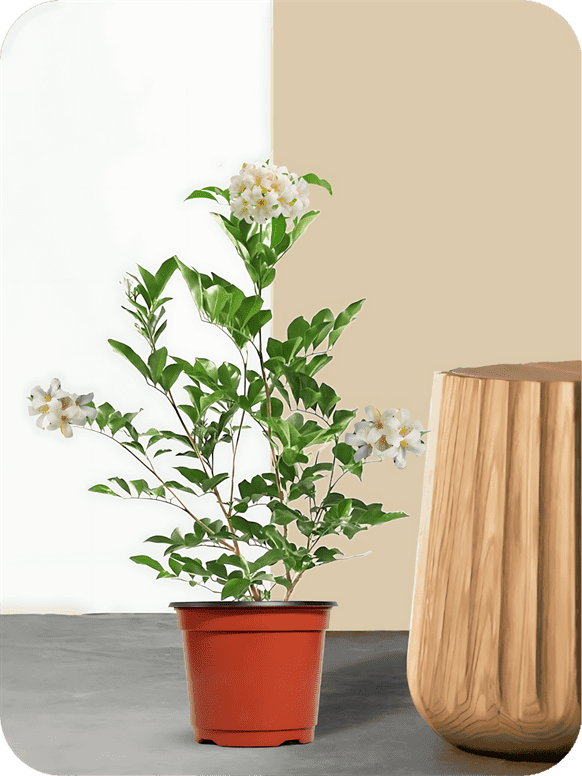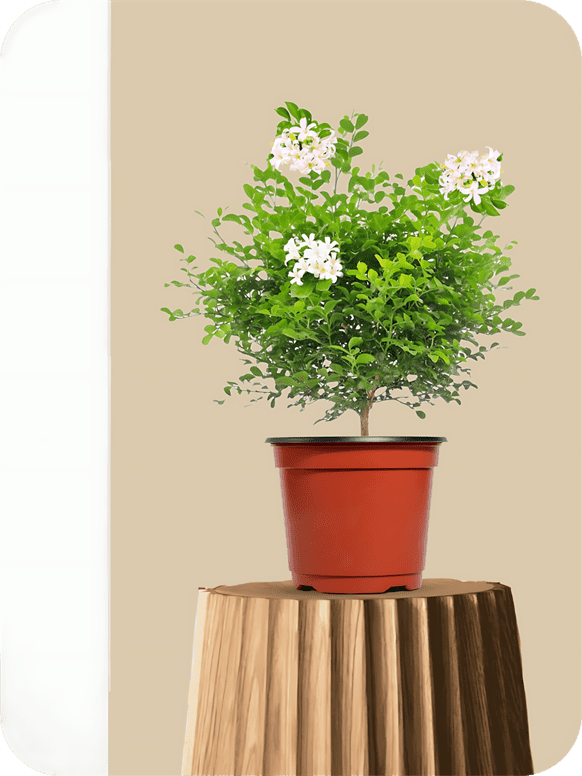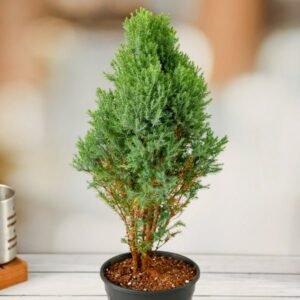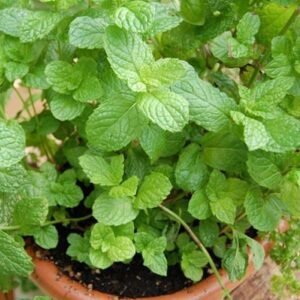Description
Madhukamini Plant (Murraya paniculata): A Comprehensive Description
The Madhukamini plant, scientifically known as Murraya paniculata, is a flowering shrub or small tree admired for its fragrant white blossoms, attractive foliage, and ornamental appeal. Commonly referred to as Orange Jasmine, Mock Orange, or Chinese Box, this plant is native to South and Southeast Asia and belongs to the Rutaceae family, which also includes citrus plants.
Botanical Classification:
- Kingdom: Plantae
- Order: Sapindales
- Family: Rutaceae
- Genus: Murraya
- Species: M. paniculata
Physical Description
Height and Structure:
The Madhukamini plant is a medium-sized evergreen shrub that can grow to heights of 6 to 12 feet, though with regular pruning it is often kept shorter in home gardens or as a hedge. In optimal conditions, the plant can reach up to 15 feet. It has a dense, bushy structure with multiple stems and a rounded crown, making it ideal for topiary and landscape design.
Leaves:
The leaves are glossy, deep green, and pinnate, composed of small leaflets that are oval or elliptical in shape. They typically measure 2 to 4 inches in length and emit a citrus-like fragrance when crushed. The lush foliage provides an attractive backdrop to its blooms and makes the plant a year-round decorative element.
Flowers:
Madhukamini is best known for its small, star-shaped, white flowers. The flowers grow in clusters and bloom profusely, especially during warm weather. Each flower is about 1 to 2 centimeters in diameter and emits a strong, sweet fragrance reminiscent of orange blossoms or jasmine, hence the common name “Orange Jasmine.” The scent is most intense during the evening, attracting pollinators like bees and butterflies.
Fruits:
Following the flowering season, the plant produces small, bright red to orange berries that are oval-shaped and about 1 cm long. These berries are not commonly eaten by humans but are a source of food for birds. They also add visual interest to the plant.
Habitat and Growing Conditions
Native Habitat:
Madhukamini is native to tropical and subtropical regions of South Asia, including India, Sri Lanka, Myanmar, and parts of Southeast Asia like Thailand and Malaysia. It thrives in warm, humid climates and is commonly seen in gardens, parks, and as hedges in urban and rural settings.
Sunlight and Soil:
This plant prefers full sun to partial shade. While it can tolerate a variety of soil types, it grows best in well-drained, fertile loamy soil. It can adapt to mildly acidic to neutral pH levels and appreciates soil enriched with organic matter.
Watering Needs:
Madhukamini requires moderate watering. During dry or hot periods, regular watering is important to prevent leaf drop and encourage flowering. However, overwatering or waterlogged soil should be avoided, as it can lead to root rot.
Temperature and Climate:
Being a tropical plant, Madhukamini thrives in warm temperatures ranging from 20°C to 35°C (68°F to 95°F). It is not frost-tolerant and may not survive prolonged exposure to temperatures below 5°C (41°F) without protection.
Cultivation and Maintenance
Propagation:
The plant is commonly propagated by seeds or stem cuttings. Stem cuttings are a preferred method as they root relatively easily and maintain the characteristics of the parent plant. Seeds may take longer to germinate and grow.
Pruning:
Pruning is essential to maintain the plant’s shape and promote denser foliage. It responds well to regular trimming and is often shaped into hedges or topiary forms. Pruning after flowering helps in maintaining the aesthetic appeal and encourages new blooms.
Fertilization:
Applying a balanced fertilizer (such as NPK 10-10-10) during the growing season supports healthy growth and abundant flowering. Organic compost or well-rotted manure can also be added periodically to enrich the soil.
Pests and Diseases:
Madhukamini is relatively pest-resistant but may occasionally be affected by aphids, scale insects, or whiteflies. Fungal infections can occur in overly damp conditions. Using neem oil or appropriate organic pesticides can help manage pest problems. Ensuring good air circulation and proper spacing can minimize the risk of disease.
Uses and Benefits
Ornamental Use:
Madhukamini is primarily grown for its ornamental value. It is a popular choice for:
- Garden borders and hedges
- Container planting on patios and balconies
- Foundation plantings near buildings
- Bonsai cultivation due to its small leaves and woody stems
Fragrance:
The intensely fragrant flowers are one of the main reasons for its popularity. In traditional gardens, it is often planted near windows or entrances to enjoy the aroma.
Pollinator Attraction:
Its flowers attract bees, butterflies, and other beneficial pollinators, making it a good companion plant for vegetable or fruit gardens.
Cultural and Traditional Uses:
In some regions, the leaves and flowers of the Madhukamini plant are used in traditional medicine, although not extensively. Its aromatic properties have made it a minor component in some folk remedies for coughs and colds.
Air Purification:
Like many other green plants, Madhukamini helps improve air quality by absorbing carbon dioxide and releasing oxygen. Its dense foliage also traps dust and pollutants, contributing to a cleaner environment.
Symbolism and Aesthetic Appeal
The Madhukamini plant symbolizes beauty, purity, and charm due to its pristine white flowers and soothing fragrance. It is often used in landscaping projects for spiritual or meditative gardens. The evergreen nature of the plant also represents resilience and permanence, making it a favorite in traditional Indian home gardens.
Environmental Impact and Sustainability
Madhukamini is a low-maintenance, eco-friendly plant that contributes positively to urban greening. Its drought tolerance (once established) and minimal need for chemical fertilizers or pesticides make it a sustainable choice for environmentally conscious gardeners. It supports biodiversity by providing food and habitat for insects and birds.
Conclusion
The Madhukamini plant (Murraya paniculata) is a delightful addition to any garden due to its lush green leaves, exquisite white flowers, and enchanting fragrance. Whether grown as a decorative hedge, a container specimen, or a focal point in landscape design, this plant combines beauty, utility, and ecological value. With minimal maintenance and the right growing conditions, Madhukamini offers year-round greenery and bursts of sweet-smelling blooms, making it a perennial favorite among garden enthusiasts and landscapers alike.








Reviews
There are no reviews yet.